TCIA Accredited
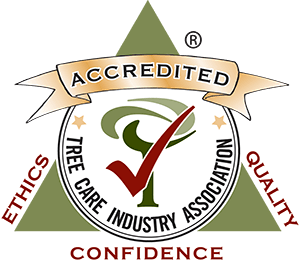 Splintered Forest has met all the requirements and earned accreditation with the Tree Care Industry Association (TCIA), the trade association for commercial tree care companies and the only program of its kind in the industry. This accreditation is a voluntary process evaluating businesses to ensure that professional practices and standards are met by all employees that work on a client’s property.
Splintered Forest has met all the requirements and earned accreditation with the Tree Care Industry Association (TCIA), the trade association for commercial tree care companies and the only program of its kind in the industry. This accreditation is a voluntary process evaluating businesses to ensure that professional practices and standards are met by all employees that work on a client’s property.
What does this mean for Splintered Forest clients?
The TCIA accreditation is a business practices and compliance audit program ensuring clients that Splintered Forest has implemented:
- Consumer satisfaction
- Best business practices
- Ethical business conduct
- Formal training and certification of employees
- Industry, state and federal standards compliance
- Adherence to safety and quality standards
- Insurance coverage and workmen’s compensation
Accredited tree care companies must re-apply every three years so their business practices can be reviewed and re-evaluated.
To learn more about the Tree Care Industry Association, visit www.tcia.org.
CCO Certified
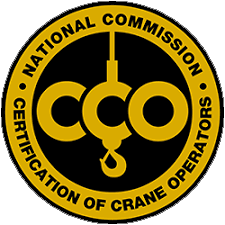 The National Commission for The Certification of Crane Operators (NCCCO) is a non-profit organization with a mission of developing effective performance standards for safe crane operations. They aim to enhance lifting equipment safety, reduce workplace risk, improve performance records, stimulate training and give due recognition to the professionals who work in, with and around cranes.
The National Commission for The Certification of Crane Operators (NCCCO) is a non-profit organization with a mission of developing effective performance standards for safe crane operations. They aim to enhance lifting equipment safety, reduce workplace risk, improve performance records, stimulate training and give due recognition to the professionals who work in, with and around cranes.
To learn more about the NCCCO, visit http://www.nccco.org.
International Society of Arboriculture (ISA) Certified Arborist
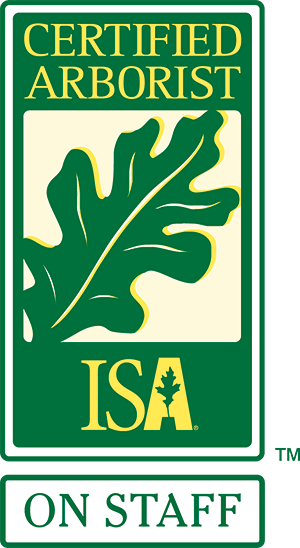 Splintered Forest has ISA Certified Arborists on staff to assure that all of your tree service needs are taken care of professionally and efficiently. To become certified through the International Society of Arboriculture (ISA), you must have a minimum of three years of practical work experience in the tree care industry and have knowledge of all aspects of arboriculture. Applicants must pass an extensive exam developed by a panel of industry experts that covers ten knowledge areas including: soil management, identification/selection, installation/establishment, safe work practices, tree biology, pruning, diagnosis/treatment, urban forestry, tree protection and tree risk management.
Splintered Forest has ISA Certified Arborists on staff to assure that all of your tree service needs are taken care of professionally and efficiently. To become certified through the International Society of Arboriculture (ISA), you must have a minimum of three years of practical work experience in the tree care industry and have knowledge of all aspects of arboriculture. Applicants must pass an extensive exam developed by a panel of industry experts that covers ten knowledge areas including: soil management, identification/selection, installation/establishment, safe work practices, tree biology, pruning, diagnosis/treatment, urban forestry, tree protection and tree risk management.
Thomas Garrett – Certificate Number RM-8434A
Charles “Alex” Gulledge – Certificate Number RM-7806A
Koby Gutsch – Certificate Number RM-8514A
Bradley Huddleston – Certificate Number RM-7716A
William Knapp – Certificate Number RM-320230A
Evan Russell – Certificate Number WE-14798A
John Sepulveda – Certificate Number WI-1454B
Certified Tree Care Safety Professional (CTSP) on Staff
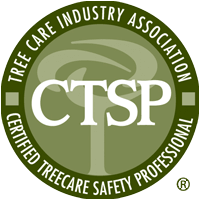 To become eligible for the Certified Tree Care Professional program, you must meet at least one of following requirements:
To become eligible for the Certified Tree Care Professional program, you must meet at least one of following requirements:
- Three years of technical field experience in tree care with at least one year of assumed responsibility for safety
- Six months’ technical field experience in arboriculture and one year in a professional safety position
- Two- or four-year degree in Arboriculture, Forestry, Ornamental/Environmental Horticulture, Natural Resources, Industrial Hygiene, Occupational Safety or other related field with an internship that provided technical field experience
Eligible professionals must complete a workshop and pass the CTSP exam. To learn more, visit the TCIA website.
OSHA Hazard Recognition Training
The OSHA 30-Hour Hazard Recognition Training Course for the Construction Industry trains workers, managers and employers on topics including job site hazards, protection and the safety culture needed to avoid accidents in the workplace. Some of the course topics include cranes, rigging, hazard mitigation, safety program requirements and worker’s rights among others.
Aerial Rescue Certification
“TCIA’s Aerial Rescue Training Program™ helps you protect your employees and meet the aerial rescue training requirements mandated by ANSI Z133.1 and OSHA. The most common reason for double fatalities in tree care is failed aerial rescue attempts – an emergency could develop any time one of your crews is aloft, and your employees must know how to react,” according to their website.
The certification is designed to incorporate on-the-job training so that crews have the knowledge to evaluate an emergency situation and potentially rescue an injured worker in the air.
Commercial Driver’s License (CDL)
A Commercial Driver’s Licenses (CDL) is required for operating vehicles that weigh over a certain amount. Drivers who obtain a commercial license are held to a higher standard because it requires a higher level of knowledge, skills, experience and physical abilities than those needed to operate a non-commercial vehicle. Applicants must pass both a skills and knowledge test and visit a medical professional for a physical.
Drivers on the Splintered Forest crew have completed the necessary requirements in Colorado and received either their Class A or Class B Licenses with airbrake endorsements.
Heartsaver CPR/AED Certification
Splintered Forest crew members routinely complete Heartsaver First Aid CPR AED certifications through the American Heart Association to assure they are equipped with the knowledge to react to an emergency situation on a job site. The courses are designed to teach CPR, how to properly operate an AED and life-saving first aid skills.
International Society of Arboriculture Member – Rocky Mountain Chapter
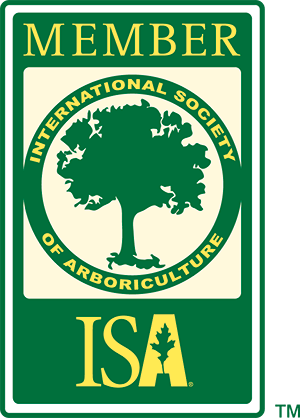
“ISA is an educational and research society with over 15,000 members worldwide. Since 1924, ISA has been providing an excellent avenue for arborists to keep in touch with the latest professional growth that comes with ISA membership,” according to the ISA website.
Splintered Forest is proud to be an active member with the Society and a part of the Rocky Mountain Chapter.
Tree Care Industry Association Member
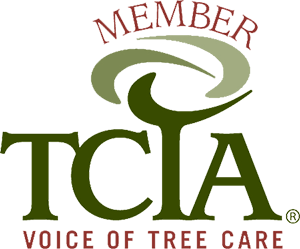 “The Tree Care Industry Association (TCIA) is a trade association of 2,300 tree care firms and affiliated companies and was established in 1938 as the National Arborist Association. The TCIA develops safety and education programs, standards of tree care practice, and management information for tree and landscape firms around the world. We provide continuing education, training, conferences and publications to promote the safe and appropriate practice of tree care,” according to their website.
“The Tree Care Industry Association (TCIA) is a trade association of 2,300 tree care firms and affiliated companies and was established in 1938 as the National Arborist Association. The TCIA develops safety and education programs, standards of tree care practice, and management information for tree and landscape firms around the world. We provide continuing education, training, conferences and publications to promote the safe and appropriate practice of tree care,” according to their website.
